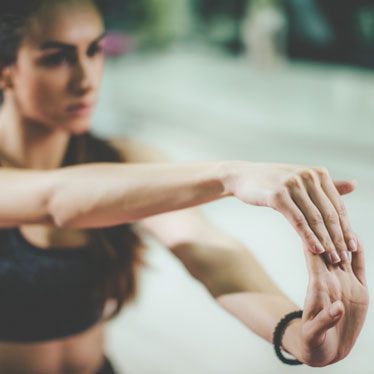Hand And Finger Exercises For Cellists

Hand and finger exercises for cellists are important for multiple reasons. In addition to allowing you to accurately and expressively play your notes, these exercises benefit your well being. The repetitive motions required to play a string instrument are taxing for musicians' bodies. In the case of cellists, some of the most common ailments or complaints stem from inflammation, tenderness and overuse injury in the fingers, hands and forearms. These show up via nerve pain, tendonitis, and even carpal tunnel syndrome.
Preventing these physical aggravations requires diligent attention on behalf of the player when it comes to warming up properly and for a long enough period, your playing posture and technique. Also, cellists are wise to integrate exercise and strength training routines into their practice schedule as a holistic approach to health also benefits the parts of the body most affected by your playing.
Enroll in a yoga class
Yoga is a remarkable form of exercise because it combines every type of exercise your body needs - from cardiovascular workouts and stretches focusing on flexibility, to mindfulness and breathing exercises that improve focus and stress management. The simple act of taking a yoga class, often available for free (on campus) or for affordable, student prices, will benefit your cello playing and the flexibility, agility and strength of your fingers, hands, arms, shoulders and so on.
In this YouTube video, cello player Susan Sturman walks you through a short series of yoga stretches specific to cellists, beginning with wrist and hand stretches. Incorporating these into your warm-up time, or during breaks from long rehearsals, will keep cello playing appendages more comfortable.
Exercises to improve finger dexterity
All string musicians benefit from finger dexterity, but the left hand of cello players are required to span much longer distances, which is taxing for fingers that are stiff or struggling to make their way along the neck of the instrument.
Practice those scales and arpeggios
While scales and arpeggio practice may seem repetitive and boring, they are key to developing the necessary muscle memory required to become an advanced string player. And, they also improve finger dexterity because they are both a physical exercise and a musical practice in one. As you advance from a beginner to an intermediate player, intentionally isolate arpeggios requiring larger stretches. Also, aim for “methodical and precise,” rather than “speedy,” for optimal results.
Maintain good playing posture
Remember that your body is connected, so improper position of your neck and shoulders make it more difficult for your fingers, hands and arms to be positioned correctly as you play. Practicing in front of a mirror is helpful for this, allowing you to adjust misalignments as you notice them, immediately facilitating finger fluidity along the fingerboard.
Buy or print a portable fingerboard
You can buy a portable cello fingerboard - or print one online - to practice fingering exercises (simultaneously building flexibility and dexterity) without making a sound. Fingering exercises can be done on a bus, at your desk or table, or at home when you want to practice after your normal practice hours (and sound allotment) are used up.
We also recommend reading, Improving Finger Dexterity for String Musicians for an additional list of tips and exercises designed with finger strength and dexterity in mind.
Don't forget about the pinky
The pinky can feel like the clumsiest and least cooperative finger in the bunch. That's no surprise considering you didn't require much of it before playing the cello. Pinky dexterity and strength is key to producing consistent, high-quality notes so giving the pinkie extra exercise pays off.
One of the simplest way to develop accuracy and strength in the pinkies is to regularly perform pencil reaches. Grip a pencil lightly between your fingers, palm down and walk your pinkie out, out, out and away from your other fingers as far as it will go; then walk it back again. Awkward and slow at first, you'll be amazed at how regularly performing this exercise improves speed and coordination. Feel free to do it with your right hand as well.
Protect your cramping thumbs
Thumbs are notorious for cramping up, and that's a sure sign that you're overtaxing yourself or you haven't stretched and warmed up properly. If your thumb begins to cramp, extend your arm out with palm facing up. Reach your non-cramping hand around, underneath and palm facing upward, and take hold of your cramped thumb. Gently stretch the thumb back towards your body. Click Here for a visual.
Download Fingering Strings
We're big fans of technology, especially the wealth of apps available to support cellists and other string musicians. One of the most popular for beginning cellists is Fingering Strings, which has some of the highest-rated and comprehensive fingering charts available for cello - including the ability to display all 16 positions.
Keeping your fingers and body in shape goes a long way to improving playing comfort and preventing injury.
Sponsored by Thomastik-Infeld


